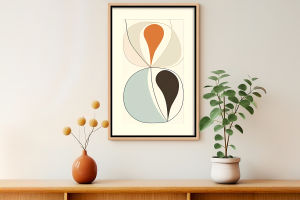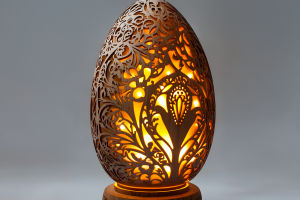Have you ever wished that art could step off the wall and surround you completely?
Virtual reality (VR) is turning that wish into reality. Instead of viewing art on a flat canvas or screen, VR invites you inside the artwork itself—where you can explore, touch, and even change the art around you.
This shift from passive watching to active participation is redefining what art can be and how we experience it.
Breaking Free from 2D Constraints
Traditional art forms like painting and photography rely on two dimensions—height and width—to tell their stories. VR, however, adds depth and space, creating a fully three-dimensional environment. This means artists can build entire worlds rather than single images.
You can walk around sculptures, peek behind objects, or even fly through abstract landscapes.
This spatial freedom allows for a more holistic sensory experience. Instead of just sight, VR art can incorporate sound, movement, and interaction—engaging multiple senses simultaneously. For example, an artist might design a forest scene where the leaves rustle as you move or where colors shift depending on your gaze. This multi-sensory immersion deepens emotional connection and makes the art feel alive.
Designing Interactive 3D Art in Virtual Space
Creating VR art is not just about sculpting or painting in 3D—it's about programming interactivity. Artists use software platforms like Unity or Unreal Engine combined with VR tools to craft experiences that respond to user actions.
This could be as simple as changing colors when you touch an object or as complex as evolving narratives shaped by your decisions.
There are key design principles to consider:
1. User Agency: Give viewers the ability to influence or alter the artwork. This creates a sense of ownership and discovery.
2. Spatial Intuition: Make navigation natural and comfortable, avoiding disorientation. Clear visual cues and gradual transitions help users stay grounded.
3. Feedback Loops: Immediate responses—visual, auditory, or tactile—reinforce interactions and make the experience rewarding.
These interactive elements require the artist to think like both a creator and a game designer, blending aesthetics with usability.
Challenges and Opportunities in VR Art
While VR offers unprecedented creative freedom, it also presents unique challenges. Technical barriers like hardware costs, motion sickness, and software complexity can limit accessibility. Artists must also grapple with the ephemeral nature of digital art—how to preserve and display VR pieces outside of a headset.
However, these challenges come with exciting opportunities. The digital nature of VR allows for collaboration across continents, real-time updates, and even integration of AI to create evolving artworks that grow and change with audiences. VR exhibitions can reach global audiences without physical constraints, expanding the democratization of art.
The Future: Art as Experience, Not Object
VR art pushes us to rethink what art is. Instead of a static object, art becomes an environment, a journey, a shared experience. This shift aligns with broader trends toward experiential culture, where people value immersive and participatory activities.
Imagine visiting a virtual gallery where the artwork reacts to your emotions or creating a personal VR space filled with memories and symbolism only you understand. These possibilities make VR art deeply personal and transformative.
Additionally, VR technology is evolving rapidly. Devices are becoming lighter and more affordable, making VR art more accessible to a wider audience.
As this happens, more artists will experiment with mixed reality, combining physical and virtual elements for hybrid experiences. This will further blur the boundaries between traditional and digital art forms, expanding creative possibilities in ways we can only begin to imagine.
So next time you put on a VR headset, consider yourself not just a viewer, but a participant in a living, breathing artwork that transcends traditional limits. How might this change your relationship with art forever?


